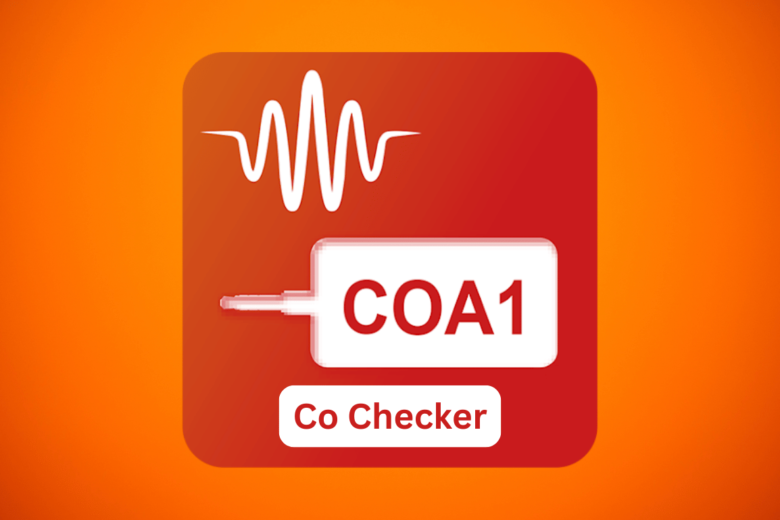In today’s world, safety is paramount in every aspect of life, from personal spaces like homes to workplaces and public institutions. One critical area often overlooked is carbon monoxide (CO) detection. A CO checker, commonly known as a carbon monoxide detector or alarm, is an essential tool designed to detect the presence of this deadly gas. This guide will delve into what CO checkers are, how they work, why they are essential, and tips for proper usage.
Understanding Carbon Monoxide and Its Risks
Carbon monoxide is a colorless, odorless, and tasteless gas produced by the incomplete combustion of fuels such as wood, coal, propane, natural gas, and oil. It is highly toxic and can pose severe health risks or even be fatal when inhaled in significant quantities.
Common Sources of CO
- Malfunctioning or poorly ventilated appliances (heaters, stoves, fireplaces).
- Gas-powered generators and engines.
- Clogged chimneys or flues.
- Vehicles left running in enclosed spaces, such as garages.
Symptoms of CO Poisoning
Early symptoms of carbon monoxide poisoning include headache, dizziness, nausea, and confusion. Prolonged exposure can lead to loss of consciousness, permanent damage to the brain and heart, or death.
Given these dangers, early detection of carbon monoxide is vital, and CO checkers play a crucial role in safeguarding lives.
What Is a CO Checker?
A CO checker is an electronic device designed to measure the levels of carbon monoxide in the air. When unsafe levels of CO are detected, the device sounds an alarm, alerting occupants to take immediate action.
Types of CO Checkers
- Battery-Powered CO Detectors:
- Portable and easy to install.
- Require regular battery checks or replacements.
- Plug-in CO Detectors:
- Connected to an electrical outlet.
- May have battery backup for power outages.
- Hardwired CO Detectors:
- Integrated into the building’s electrical system.
- Often part of a broader security or alarm system.
- Smart CO Detectors:
- Feature Wi-Fi connectivity and can send alerts to smartphones.
- Integrate with home automation systems for enhanced safety.
How CO Checkers Work
CO checkers operate using one of the following sensor technologies:
Electrochemical Sensors
- These sensors use a chemical reaction to detect carbon monoxide.
- Known for their accuracy and reliability.
Metal Oxide Semiconductors
- Utilize a heated sensor to detect CO levels.
- Common in budget-friendly detectors.
Biomimetic Sensors
- Use a gel that changes color when exposed to carbon monoxide.
- The color change triggers the alarm system.
Regardless of the sensor type, most modern CO checkers include visual indicators (LED lights) and auditory alarms to alert users.
The Importance of CO Checkers
Saving Lives
According to health authorities, carbon monoxide poisoning claims thousands of lives annually and hospitalizes many more. A functioning CO checker can detect the gas early and prevent tragic outcomes.
Ensuring Compliance
Many countries and local jurisdictions have laws mandating the installation of CO detectors in residential and commercial properties. Adhering to these regulations not only ensures safety but also avoids legal penalties.
Protecting Vulnerable Populations
Children, the elderly, and individuals with respiratory conditions are particularly vulnerable to the effects of CO poisoning. Having a CO checker in place provides added protection for these groups.
Installation and Placement Tips
To maximize the effectiveness of CO checkers, proper placement and installation are crucial. Here are some guidelines:
- Install on Every Floor:
- Place a CO detector on each level of your home or building.
- Ensure one is near sleeping areas for quick alerts during the night.
- Avoid Obstructions:
- Do not install detectors behind furniture or curtains.
- Ensure they are in open areas with good airflow.
- Distance from Appliances:
- Avoid placing detectors too close to fuel-burning appliances, as brief emissions may trigger false alarms.
- Maintain a distance of at least 15-20 feet.
- Follow Manufacturer Guidelines:
- Adhere to the specific instructions provided in the product manual for optimal placement.
Maintenance and Testing
To ensure your CO checker remains effective, regular maintenance and testing are necessary:
- Test Alarms Monthly: Press the test button on the device to verify that it functions correctly.
- Replace Batteries: If using a battery-powered unit, replace the batteries at least once a year or when the low-battery signal sounds.
- Clean the Detector: Use a dry cloth to remove dust and debris from the device, ensuring unobstructed operation.
- Replace the Unit When Necessary: Most CO detectors have a lifespan of 5-10 years. Check the product manual for replacement timelines.
Modern Innovations in CO Detection
With advancements in technology, CO checkers have evolved significantly. Many modern devices now feature:
- Mobile Alerts: Receive notifications on your phone if dangerous CO levels are detected, even when you’re away from home.
- Voice Alarms: In addition to beeps, some detectors announce warnings with voice alerts, making them more user-friendly.
- Integration with Smart Systems: Link CO detectors to smart home systems, enabling automated responses like turning off appliances when CO is detected.
Responding to a CO Alarm
If your CO checker sounds an alarm:
- Evacuate Immediately: Leave the premises and move to an open area with fresh air.
- Call Emergency Services: Inform professionals about the situation and request an inspection.
- Ventilate the Area: Open windows and doors to allow fresh air to circulate.
- Do Not Re-enter Premises: Wait for confirmation from authorities that it is safe to return.
Conclusion
A CO checker is a simple yet indispensable tool that can save lives by detecting a silent killer. By understanding its functionality, ensuring proper installation, and maintaining the device, you can protect yourself, your family, or your employees from the dangers of carbon monoxide. Investing in a quality CO checker is not just about compliance with regulations but about prioritizing safety and peace of mind.

